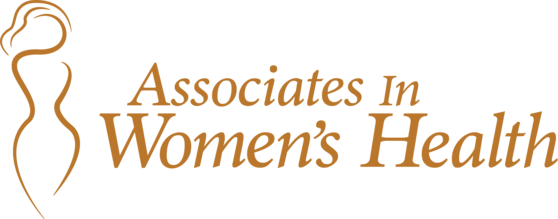What is Urinary Incontinence?
Urinary incontinence (UI) is the loss of bladder control, resulting in the involuntary leakage of urine. According to statistics from the American Urological Association, a leaky bladder is a common problem that affects one-quarter to one-third of adult women in the United States.
Some women first experience stress urinary incontinence during pregnancy, due to the pressure of the growing fetus on the woman’s bladder. Frequently (but not always), symptoms of a leaky bladder resolve after delivery, only to return later in life. In fact, the odds of developing UI increase with age.
Several of the more common risk factors for urinary incontinence are listed below. As you can see, some risk factors can be reduced or removed by modifying your lifestyle. However, it is important to note that UI can develop in women who have very few or no risk factors at all. Before drastically changing your life, speak with one of our women’s healthcare professionals to discuss your unique situation. Talk about your potential risk factors and female overactive bladder treatment options.
Common Risk Factors for Urinary Incontinence
- Childbirth (especially vaginal delivery)
- Age
- Menopause
- Loss of pelvic support such as prolapse or cystocele (i.e. – dropped bladder)
- Previous hysterectomy
- Obesity
- Diabetes
- Smoking
- Multiple sclerosis or other neurologic diseases
- Some types of vascular disease
- Alzheimer’s and other types of dementia
- History of trauma to the spinal cord
Types of Urine Leakage
Many forms of urinary incontinence can present themselves:
- Only a small amount of urine leakage during certain activities.
- Very strong urges to urinate which are difficult to control.
- Urine leakage with no awareness that it is occurring.
Common types of urinary incontinence include:
- Stress Urinary Incontinence: Leakage associated with common activities like sneezing, coughing, laughing, lifting, jumping or exercise
- Urge Incontinence (also called Overactive Bladder): Sudden urge to urinate without warning. Female overactive bladder treatment, including Botox is available.
- Mixed Incontinence: A combination of stress and urge incontinence
- Overflow Incontinence: Leakage caused by an overfilled bladder
- Functional Incontinence: Caused by having trouble getting to the bathroom on time
- Intrinsic Sphincter Deficiency (ISD): Diminished strength of the urethral muscle to the point where it cannot remain closed even under normal conditions
In women who are generally healthy, the vast majority of urine leakage is caused either by stress, an uncontrollable urge, or a combination of the two. Simple tests can be done in the office to help secure the diagnosis of your leaky bladder symptoms and offer direct, effective therapy and/or treatment.
Treatment of Stress Urinary Incontinence and Overactive Bladder for Women
Stress Urinary Incontinence Treatments
Pelvic floor, or Kegel, exercises can help prevent or reduce urine leakage. Physical therapy, targeting the pelvic floor, can also be helpful. However, many women find these measures to be insufficient treatments for urine leakage.
Surgery to provide improved support for the bladder neck is often the best solution. These surgeries have evolved over the years to the point where they are now very reliable and typically done on an outpatient basis with minimal recovery time. Mid-urethral sling surgery is the most common of these procedures and is considered the best choice for most women due to the ease of placement, high success rates, and low risk of complications. For women who are not candidates for a mid-urethral sling, there are a variety of other surgeries that can be performed to mitigate urinary incontinence.
Urge Incontinence/Overactive Bladder Treatments
Avoiding or reducing alcohol, caffeine, nicotine, and highly acidic foods which can irritate your bladder may help reduce the urge to urinate. Timed voids—gradually increasing the amount of time between bathroom trips—can also be very effective in retraining the bladder muscle and the nerves which control its function to decrease or eliminate frequent trips to the bathroom.
Medication is another option for treating urine leakage. In recent years, several highly effective medications have been developed to treat overactive bladders. Most are taken once a day, making them convenient in terms of scheduling. Dry mouth, dry eyes, or constipation are possible side effects.
If simpler measures fail to provide relief, more elaborate approaches are available to treat your leaky bladder symptoms. These include biofeedback, Botox ™ injections directly into the bladder muscle, and placement of neuromodulating units into the nerves that control bladder function.
Female overactive bladder treatment is available, no matter your age. Many women are still told that it is just part of getting older and something they will have to put up with. This is simply untrue. With proper evaluation and diagnosis, most women can receive treatment for this aggravating and limiting condition. Contact us today and let us help you achieve your best health and quality of life. Call us at (307) 682-4664 to schedule your consultation.
Associates in Women’s Health
Providing quality healthcare to women for decades, Associates in Women’s Health has been a staple in the Gillette, WY community since 1994. Our team is proudly led by Dr. Jones who has 25+ years of experience in OB/GYN.
Committed to providing you with a lifetime of care to meet your changing needs, we are a small, compassionate group of healthcare professionals whose goal it is to give you the kind of personalized care you desire in a calm, comfortable setting. Our small practice offers state-of-the-art technology and exceptional attention to detail combined to offer you personalized healthcare you won’t find anywhere else.

